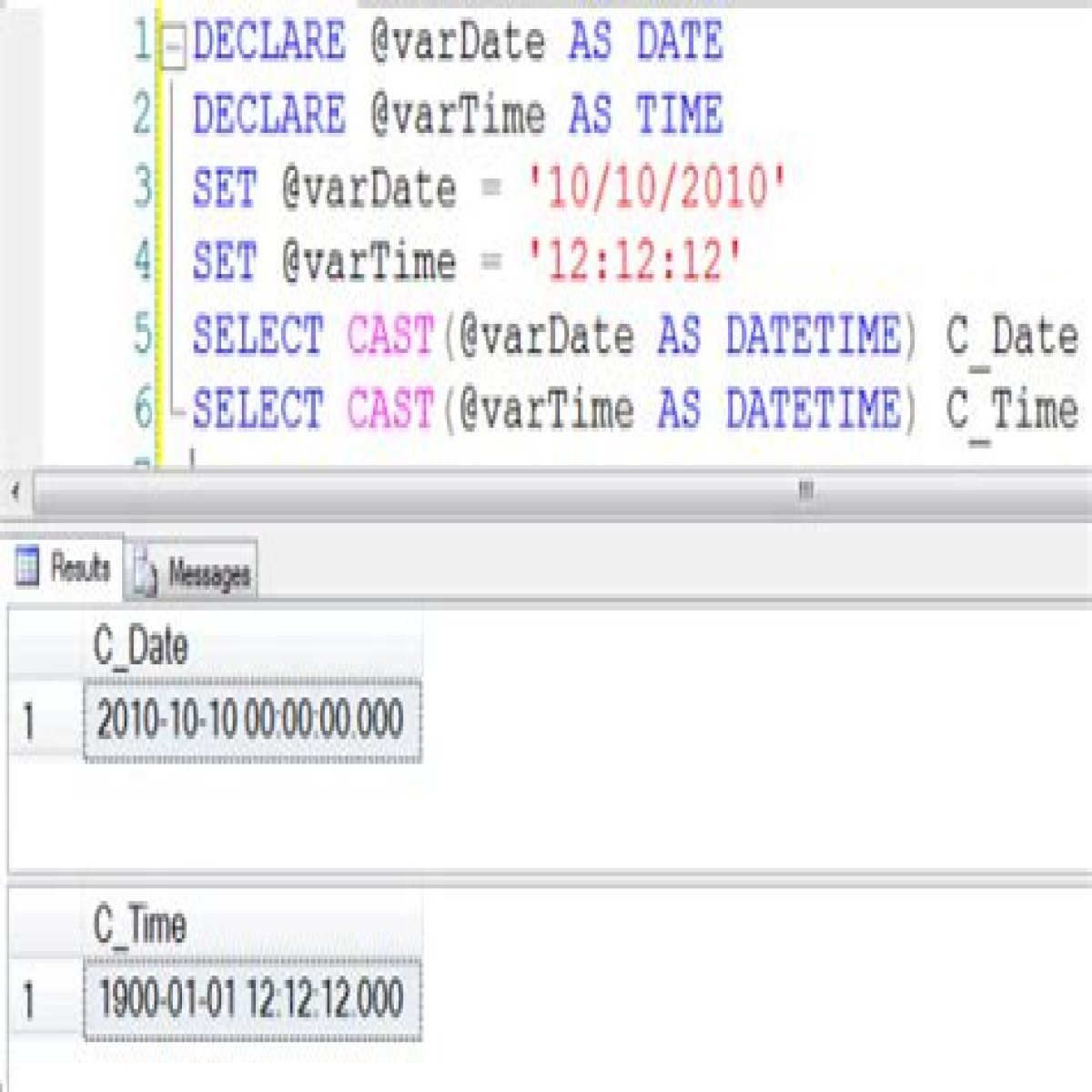In the world of database management, SQL Server plays a pivotal role, especially concerning handling data types like datetime. The default datetime in SQL Server is a crucial topic for developers and database administrators alike. Understanding how it works can significantly enhance the efficiency of your database operations and ensure the integrity of your data. In this article, we will explore the default datetime in SQL Server, its implications, and best practices for utilizing it effectively.
SQL Server uses the datetime data type to store date and time information. This data type is essential for applications that require precise time tracking, such as logging events, managing records, and scheduling tasks. However, many users may not fully understand how the default datetime operates, which can lead to unexpected results in their applications. This article aims to demystify the default datetime behavior in SQL Server and provide practical insights on managing it.
We will delve into various aspects of the default datetime in SQL Server, including its characteristics, how to set default values, and common pitfalls to avoid. By the end of this guide, you will have a deeper understanding of the datetime data type and how to leverage it in your SQL Server applications.
Table of Contents
What is Datetime in SQL Server?
The datetime data type in SQL Server is designed to store both date and time. It can hold values from January 1, 1753, to December 31, 9999, with an accuracy of 3.33 milliseconds. The datetime data type is commonly used for various applications, including:
- Tracking timestamps of transactions
- Storing event logs
- Managing schedules and appointments
Understanding how datetime works is essential for effective database design and ensuring that your applications perform optimally.
Default Datetime Value in SQL Server
In SQL Server, if you do not explicitly provide a value for a datetime column when inserting a new record, SQL Server assigns a default value. This default value is often set to 1900-01-01 00:00:00 for the datetime data type. However, it's important to note that this default behavior can lead to issues if not handled properly.
For example, if a datetime column is left empty during data insertion, the default value may not accurately reflect the intended date and time. This can lead to misleading data and affect the integrity of your database.
Setting Default Datetime Values
To avoid issues with default datetime values, you can set a custom default value for your datetime columns when creating or altering a table. This can be done using the DEFAULT constraint. Here's an example:
CREATE TABLE Events ( EventID INT PRIMARY KEY, EventDate DATETIME DEFAULT GETDATE() );
In this example, if no value is provided for the EventDate column during insertion, SQL Server will use the current date and time as the default value. This ensures that your data is more accurate and relevant.
Common Pitfalls with Default Datetime
While working with default datetime values, there are several pitfalls that developers should be aware of:
- Assuming the default value is accurate: Always verify that the default value aligns with your application's needs.
- Inconsistent datetime formats: Be cautious when inserting datetime values in different formats, as this can lead to errors.
- Timezone issues: If your application operates across different time zones, ensure that datetime values are stored consistently.
Datetime vs. Datetime2 in SQL Server
SQL Server introduced the datetime2 data type in SQL Server 2008 to address some limitations of the original datetime type. The main differences include:
- Precision:
datetime2offers greater precision, allowing for up to 7 decimal places for seconds. - Range: The range of
datetime2extends from January 1, 0001, to December 31, 9999. - Storage Size:
datetime2uses less storage space for certain precision levels compared todatetime.
Choosing between datetime and datetime2 depends on your application's requirements and the level of precision needed.
Best Practices for Using Datetime
To ensure effective use of datetime in SQL Server, consider the following best practices:
- Always set appropriate default values: Avoid relying on SQL Server’s defaults; set meaningful defaults that align with your application.
- Use
datetime2when possible: Leverage the advantages ofdatetime2for better precision and range. - Validate datetime inputs: Implement validation checks in your application to ensure that datetime values are entered correctly.
Handling Datetime in Applications
When interacting with SQL Server from your applications, proper handling of datetime values is critical. Here are some tips:
- Use parameterized queries: Avoid SQL injection attacks by using parameterized queries for datetime inputs.
- Convert and format dates appropriately: Ensure that datetime values are converted to the correct format before inserting them into the database.
- Be aware of localization: Consider the end user's timezone and locale when displaying datetime values in your application.
Conclusion
Understanding SQL Server's default datetime behavior is essential for developing robust applications that handle date and time data effectively. By setting appropriate default values, avoiding common pitfalls, and following best practices, you can ensure the integrity and accuracy of your datetime data.
We encourage you to share your thoughts and experiences regarding datetime management in SQL Server. Feel free to leave a comment below, and don’t forget to explore our other articles for more insights into database management.
Thank you for reading, and we look forward to seeing you back on our site for more valuable content!
Exploring HDMoviesHub Adult: A Comprehensive Guide To Safe StreamingSydney Sweeney: The Rising Star Of Hollywood
